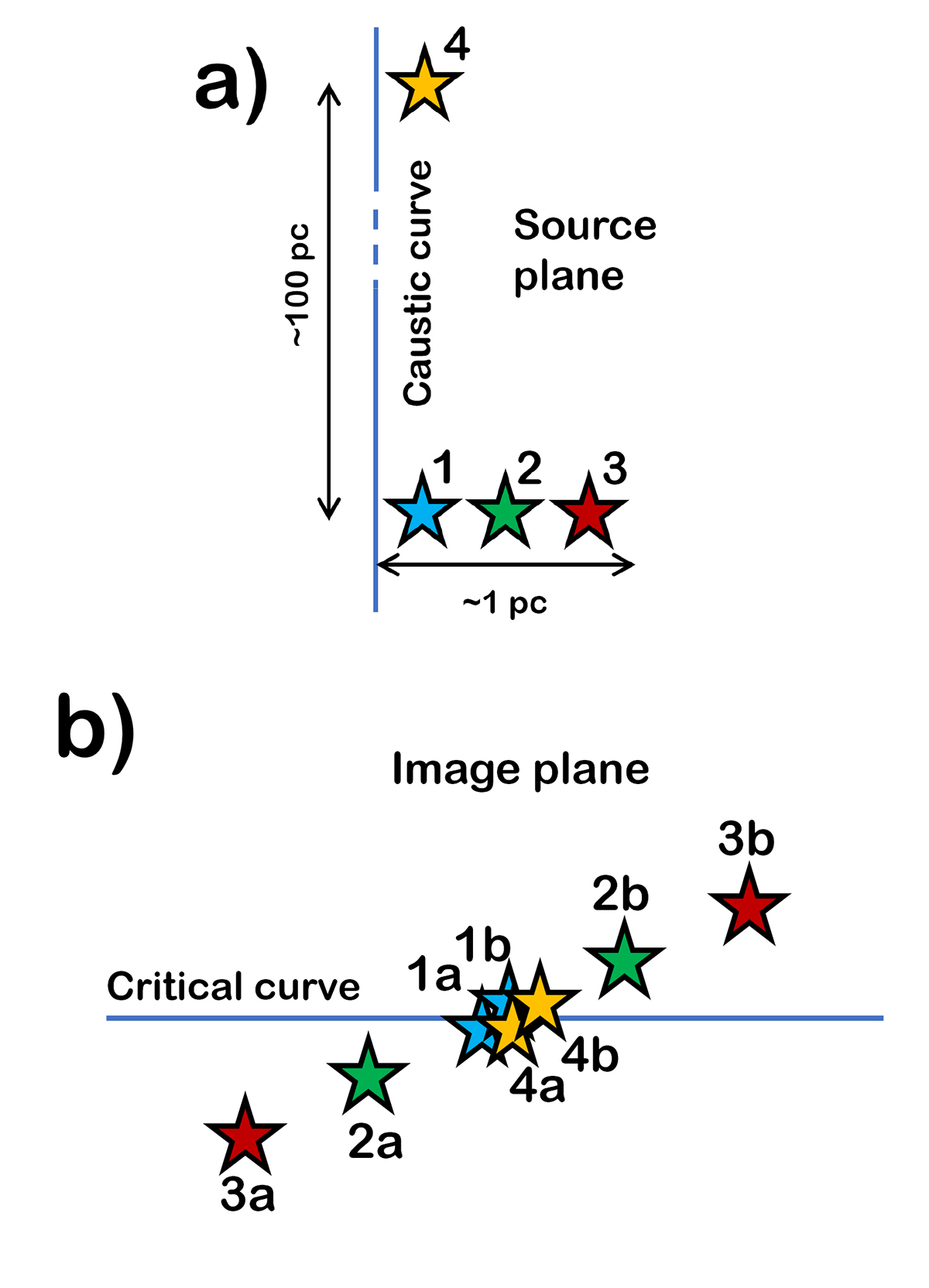Fig. 5.

Download original image
Schematic illustration of the lensing situations that allow the light from two stars in separate star clusters to blend together in the image plane forming a two-component SED. (a) The situation in the source plane, with three stars (1, 2 and 3) located close to each other and within ∼1 pc of the caustic curve. A fourth star (4) is located at a similar distance from the caustic as 1, but up to ≈100 pc away in the direction along the caustic. (b) The corresponding image-plane situation, where the stars 2 and 3 appear as resolved double images (2ab, 3ab) with a separation that increases with their distance from the caustic in (a). The images of stars 1 and 4, on the other hand, form two sets of overlapping image pairs (1ab and 4ab) at very high magnification, separated by only a small distance from the critical curve. Since the radial magnification μr is much smaller than the tangential magnification μt along the critical curve (by a factor of μr/μt ≲ 0.01), the two image pairs 1ab and 4ab may appear as an unresolved source at the angular resolution of JWST.
Current usage metrics show cumulative count of Article Views (full-text article views including HTML views, PDF and ePub downloads, according to the available data) and Abstracts Views on Vision4Press platform.
Data correspond to usage on the plateform after 2015. The current usage metrics is available 48-96 hours after online publication and is updated daily on week days.
Initial download of the metrics may take a while.


